Libyan Desert Glass 18,67 G LDG Tektite Impact Meteorite D46.2-22
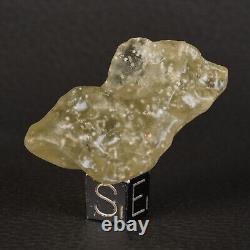
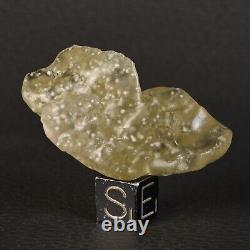

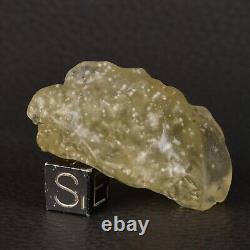
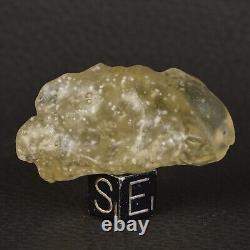
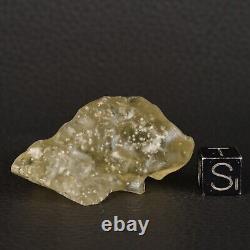






Libyan Desert Glass or LDG Libyan Desert Glass Origin: Libyan Desert, Sahara, Libya. About 29 million years old. A member of the Meteoritical Society (MetSoc #6863), the international association IMCA #2093 (International Meteorite Collectors Association) and the Global Meteoritical Association (GMA #0052), we provide a certificate guaranteeing the authenticity of each specimen.
The scale cube measures 1 cm (not included in the sale as well as the base). Magnificent translucent specimen, very beautiful coloring. Note the presence of cristobalite (small white dots) evidence of significant heat at least 1470°C. Tektite, from the Greek "tektos" (molten rock), comes from the melting of the impact surface of a meteorite.
It was during an exploration in 1846 that fragments of unknown glass were discovered scattered in the desert. It was not until the 1950s that interest in this mineral was revived by the French naturalist biologist and explorer Théodore Monod. The pharaohs knew of the existence of Libyan Desert Glass.
We have a testimony of this on the breastplate. Which adorns in its center a scarab carved in Libyan Desert Glass. Tektites are fragments of terrestrial sedimentary rocks, torn from the ground during a meteorite impact under the effect of pressure and intense heat. During the impact, the rocks melted under the effect of the shock are ejected at very high speed and can travel hundreds of kilometers. During its ballistic trajectory, the viscous material will take its final shape and cool.
Note for example the spherical, ellipsoidal, dumbbell, drop, pear, teardrop, flat or bulging disc shape, etc. The variety of shape of tektites comes from the various forces acting on them. For example, cohesion forces (for the agglomeration of viscous material), centrifugal forces (during the rotation of the material) and aerodynamics (friction force and resistance to advancement).
The trajectory of a Tektite can be intra or extra atmospheric. This will obviously have consequences on its final form, entry into the atmosphere could cause cracks on the surface, sort of furrows like scratches.
You can view our other items for sale. We systematically group your order to reduce transport costs. This will obviously have consequences on its final form, entry into the atmosphere could cause cracks on the sur.

